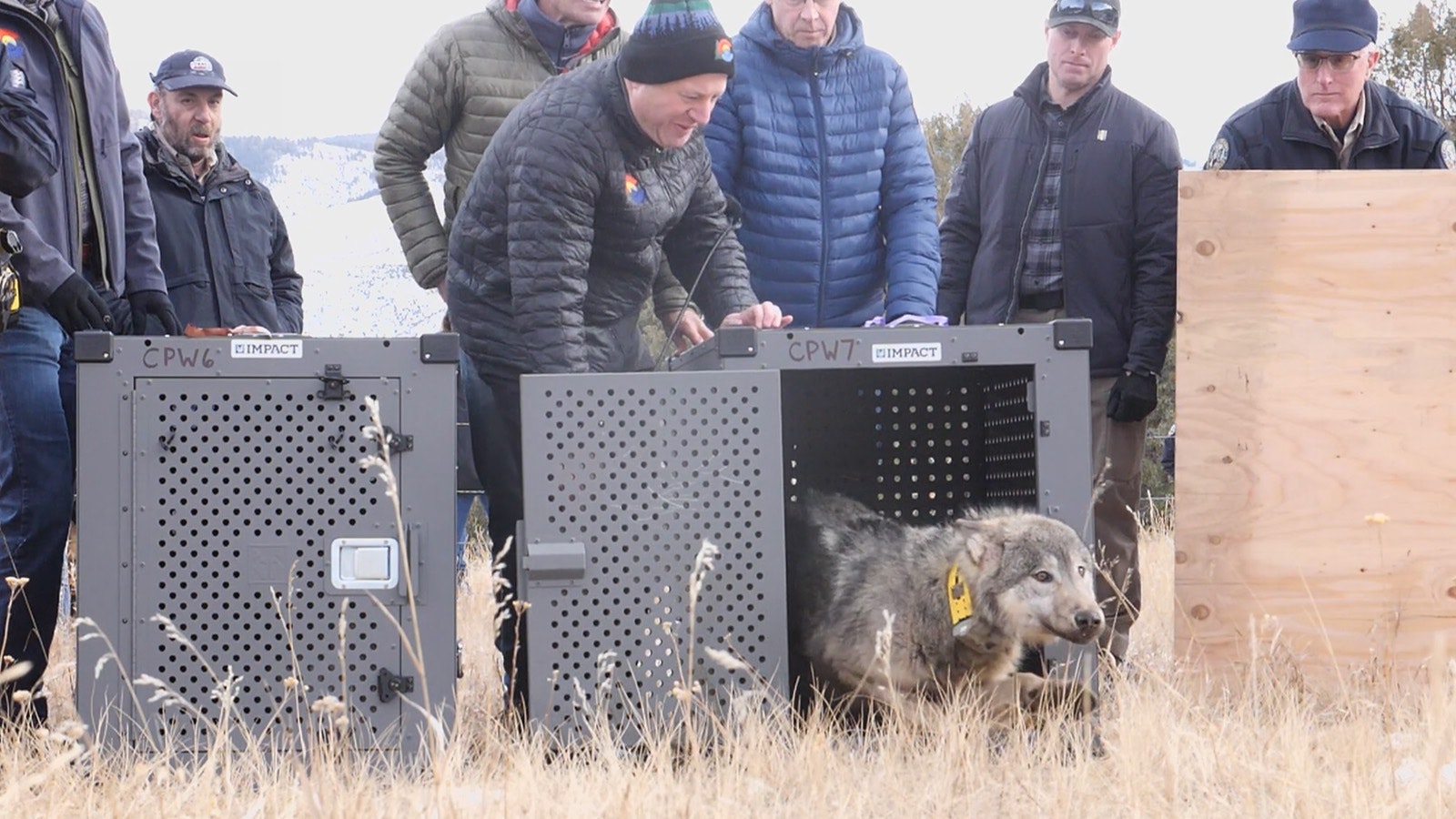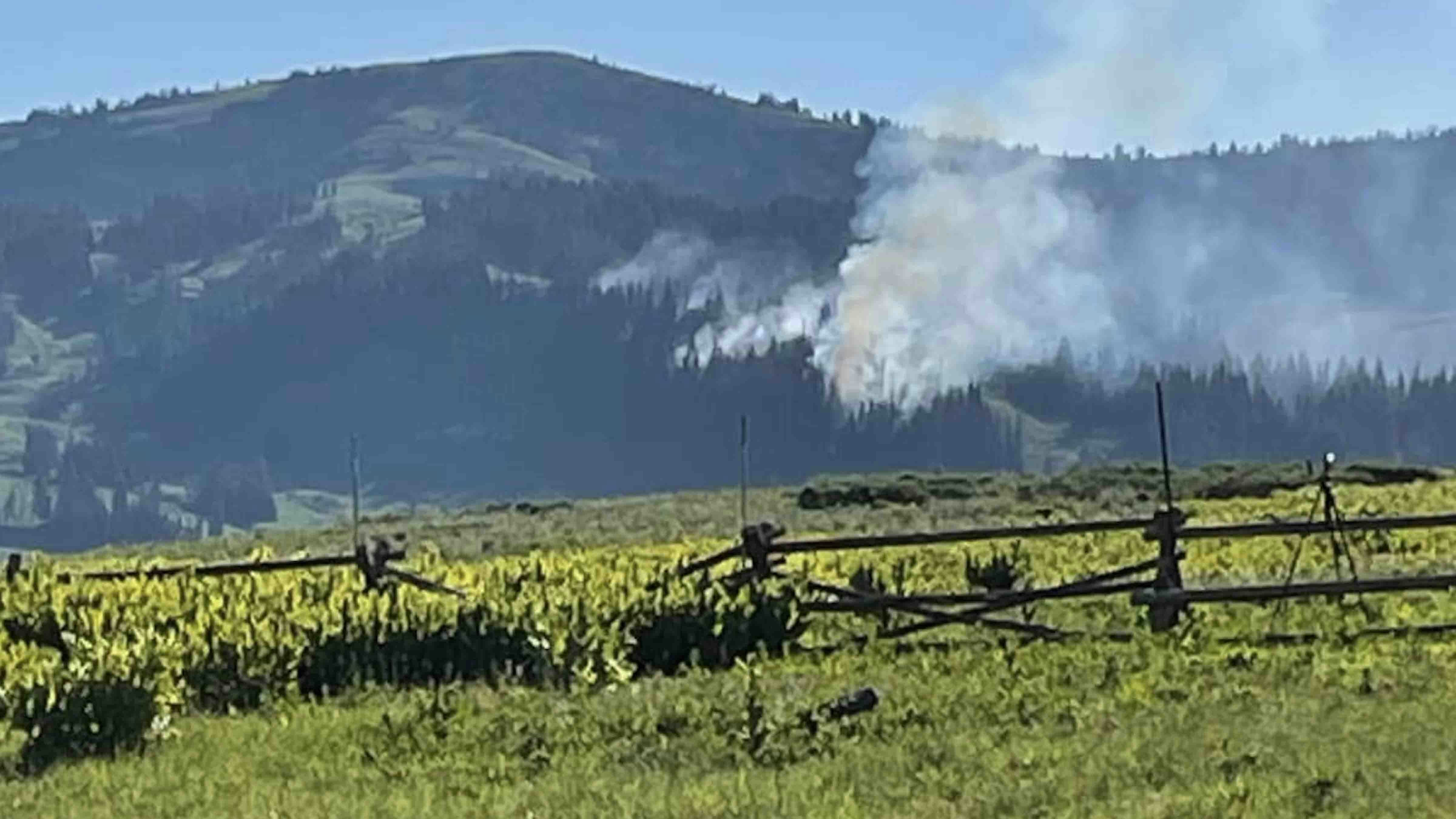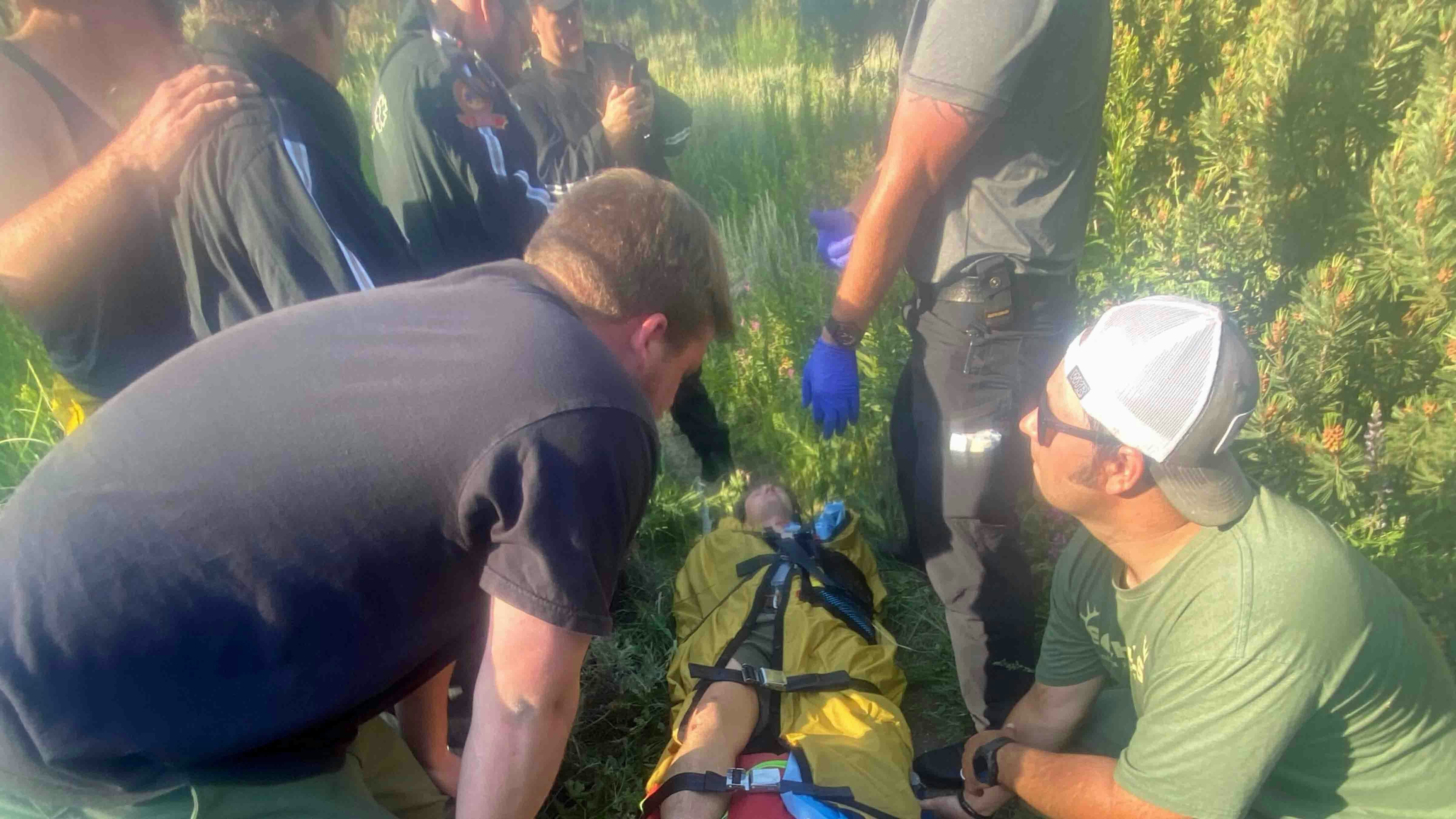Colorado Parks and Wildlife’s confirmation of a calf being killed by wolves in Jackson County, which runs up to the Wyoming border to Carbon and Albany counties, is the eighth incident of “confirmed wolf depredation” in Colorado so far this year.
Wolves from Wyoming have been in Jackson County since 2021, but CPW started an official reintroduction effort in December when 10 animals from Oregon were released on public lands in Grand and Summit counties, immediately south of Jackson County.
Now when wolves kill cattle, there’s finger-pointing both ways between the states about whose wolves killed what. In the case of the latest death over the Memorial Day weekend, Jackson County ranch owner Don Gittleson told 9News that he believes Wyoming wolves killed that calf and attacked at least seven animals since 2021.
As much as ranchers and state agencies would like to draw the line somewhere, wolves are notorious for not paying attention to maps and human-established boundaries. They routinely cross whatever lines are draw and there isn’t much of anything that can stop them.
Wolves Being Wolves
Retired Wyoming Game and Fish Department Game Warden Duanne Kerr spent much of his career working along the Colorado-Wyoming border. He doesn’t distinguish between Colorado and Wyoming wolves because the wolves don’t. The only ones who care what side of the border wolves are on are humans.
“If a wolf in Wyoming crosses into Colorado, it becomes a Colorado wolf,” he told Cowboy State Daily. “That’s the way state laws work on wildlife.”
The line separating Wyoming and Colorado is significant to people, but animals don’t heed the imaginary boundaries established by civilization. Kerr said wolves can be particularly frustrating, given their natural propensity to wander in areas where people would prefer they wouldn’t.
“Wolves don't follow instructions very well,” he said. “When they were originally released in Yellowstone National Park, the idea was they would stay in the park. But there's no way to keep them there.”
CPW began its wolf reintroduction effort after voters approved Colorado Proposition 114 in 2020 by the narrowest of margins, permitting wolves to be reintroduced to the Southern Rockies west of the Continental Divide. The wolves came from Oregon after Gov. Mark Gordon refused to send any from Wyoming.
“Wyoming is opposed to sending Wyoming wolves to Colorado because we carefully and scientifically manage our wolf population,” Gordon told Cowboy State Daily at the time. “It is likely that Wyoming wolves may very well desire to return to their home ranges, once again putting them in danger as they would likely traverse unsuitable areas of potential conflict.”

Line Of Protection
One critical difference exists between the opposite sides of the Wyoming-Colorado state line. Wolves in Colorado are protected under the Endangered Species Act, something they lack in the Northern Rocky Mountain Region of Wyoming, Montana and Idaho.
Wolves caught in Wyoming’s predator zones — which encompass about 85% of the state — can be killed on sight, with the only exceptions being Yellowstone and Grand Teton national parks. Meanwhile, Colorado ranchers must submit a request to CPW and have it approved by the U.S. Fish and Wildlife Service before any wolves can be removed from the population.
Kerr recalled several incidents where wolves living near the Wyoming-Colorado border were lured over to the Wyoming side and killed by waiting hunters. At least four wolves were killed in this way between 2019 and 2020.
“Some people from Wyoming went along the state line and started using predator calls,” he said. “Those wolves came back into Wyoming for a short distance and were shot. Some Colorado folks got pretty upset about that because they felt the Wyoming people were causing issues or doing something they shouldn't have done.”
There were no repercussions because the Wyoming hunters technically weren’t killing Colorado wolves. Wolves are managed by the laws of whatever state they’re standing in.
“Wildlife doesn't pay any attention to state lines,” he said. “If they're in one state, you could technically say they belong to that state. But once they cross out of it, they're no longer that state’s issue. I don't know how any better to explain that than that.”
No State Rivalry Going On
While it may at times seem like the debate over wolf management pits Wyoming against Colorado because of their vastly different policies, that’s not the case, said John Michael Williams, administrator of the Colorado Wolf Tracker Facebook page.
“Nobody in Colorado has any animosity toward Wyoming because the wolves just happen to come down from there,” he told Cowboy State Daily. “People understand wild animals don’t necessarily respect boundaries.
“From what I’m hearing from the ranchers that have recently lost cattle, these Oregon wolves are getting into the mix, particularly the ones from the depredating packs.”
More transparency from CPW would help the situation a lot, Williams said, adding that the difficulty in using lethal management when needed.
"It’s a disaster, it’s amateur hour, they’re literally sitting around not knowing what to do. They don’t want to consider that lethal management is necessary in some cases,” he said. “Lethal management has to be part of the plan.”
The spotlight on Colorado’s new wolves is about to get brighter, Williams said. That’s because as the weather warms up and more people are getting outdoors, there will be more potential for wolf-human encounters.
“I think we’ll start having more sightings, we have more people out in the woods, nicer weather ... and we’re prob. going to have people stumbling upon carcasses of moose and elk and deer that have been killed in the winter,” he said. “It’s going to cause the wolves to start to move around more.”
More And More Often
Whether cattle are killed by wolves from Wyoming or reintroduced into Colorado, CPW will deal with more wolf depredation in the future. Six cattle and four calves have been injured or killed by wolves in Grand and Jackson counties since April.
The CPW has confirmed 21 wolf depredation incidents since December 2021. While it’s possible that many of these incidents were caused by wolves that crossed into Colorado from Wyoming, Kerr doesn’t think it’d be possible or necessary to confirm it.
“Wolves go where there's something to eat, and they don't pay attention to state or park lines or anything like that,” he said. “Unless someone saw a wolf with a collar or markings that indicate where it started out from, there really isn't any way to tell.”
And as long as they prey on livestock, ranchers on both sides of the line are going to continue to blame the others’ wolves.
Andrew Rossi can be reached at arossi@cowboystatedaily.com.





